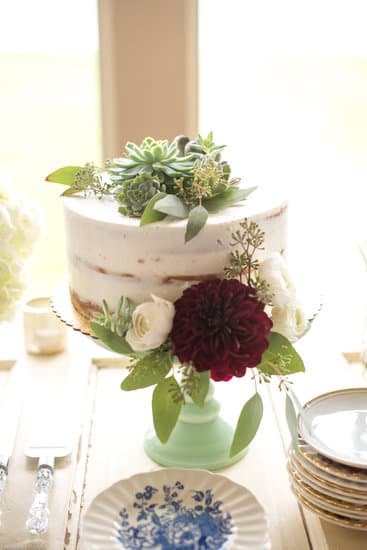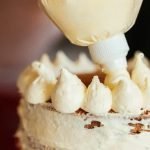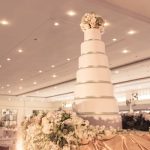Are you looking for creative ways to decorate cakes without using traditional frosting? Whether you’re avoiding dairy or simply want to try something new, there are plenty of alternative decoration options to explore. From fresh fruit toppings to whipped cream techniques and even chocolate ganache drizzles, this article will guide you through the various methods for decorating cakes without relying on the typical frosting.
When it comes to decorating a cake without frosting, it’s important to consider the type of cake you’re working with. Different flavors and textures can open up a world of decoration possibilities, allowing for endless creativity. By choosing the right cake base, you can enhance its natural flavors and create a visually stunning dessert that is both delicious and beautiful.
In the following sections, we’ll delve into a variety of decorating techniques that do not rely on traditional frosting. From using fresh fruits and edible flowers to incorporating whipped cream and layered nut toppings, there are countless ways to adorn your cakes in unique and visually appealing ways.
Whether you’re looking for a lighter alternative or simply want to explore new flavors and textures, these non-frosting decoration options are sure to impress both your taste buds and your guests.
The Importance of Choosing the Right Cake
When it comes to decorating a cake without using traditional frosting, the type of cake plays a crucial role in determining the best decoration options. The flavor and texture of the cake can either complement or clash with the chosen decorations, so it’s important to consider these factors when deciding how to adorn your confection.
Flavor Considerations
The flavor of the cake will dictate which types of decorations will work best. For example, a light and airy angel food cake may not hold up well under heavy decorations, while a rich chocolate cake can handle robust toppings. It’s important to consider the flavor profile of the cake and select decorations that will enhance, rather than overpower, its taste.
Texture Impact
In addition to flavor, the texture of the cake also plays a significant role in choosing the right decoration. A dense pound cake might pair well with crunchy nut or seed toppings for added contrast, while a fluffy sponge cake could benefit from lighter adornments such as whipped cream or fresh fruit. Considering how the decoration will interact with the texture of the cake is essential for creating a harmonious final product.
Dietary Restrictions and Allergies
Another factor to consider when choosing how to decorate a cake is any dietary restrictions or allergies that need to be accommodated. Certain traditional frosting options may contain ingredients that are off-limits for some individuals, so exploring alternative methods such as fresh fruit toppings or edible flowers can ensure that everyone can enjoy the dessert without worry.
By taking into account these factors – flavor, texture, dietary restrictions – you can make an informed decision on how to decorate your cake without frosting in a way that enhances its natural qualities and appeals to everyone’s tastes.
Fresh Fruit Toppings
When it comes to decorating cakes without using traditional frosting, fresh fruit toppings offer a colorful and natural-looking alternative that can also add a refreshing burst of flavor. Here are some creative ways to incorporate fresh fruits into cake decorations:
- Sliced or Whole Fruit: Arrange sliced strawberries, kiwi, or pineapple in a circular pattern on top of the cake for a simple yet vibrant decoration. Alternatively, place whole berries or grapes strategically for a visually appealing effect.
- Fruit Glaze: Create a glossy and professional look by brushing a fruit glaze made from apricot or peach preserves over the top of the cake and then arranging fresh fruits on top.
- Fruit Sculptures: Take your cake decoration to the next level by sculpting intricate designs or shapes using fruits like melon balls, citrus segments, or even edible flowers.
In addition to their aesthetic appeal, fresh fruit toppings offer health benefits and are suitable for individuals with dietary restrictions such as those who are lactose intolerant. With their natural sweetness and juiciness, they can enhance the overall flavor profile of the cake while also providing essential nutrients.
Overall, incorporating fresh fruit toppings onto cakes provides a versatile and visually stunning way to decorate without traditional frosting. Whether it’s for a special occasion or simply for personal enjoyment, exploring different fruit options and techniques can elevate the presentation and taste of any cake.
Whipped Cream Techniques
Whipped cream can be a fantastic alternative to traditional frosting when it comes to decorating cakes. Not only does it offer a lighter and less sweet option, but it also provides a smooth and creamy texture that enhances the overall taste of the cake. One of the key things to consider when using whipped cream as a decoration is to make sure that it is stabilized properly so that it holds its shape and doesn’t deflate.
To stabilize the whipped cream, you can add a small amount of gelatin or cornstarch to the mixture. This will help the whipped cream hold its shape for longer periods of time, making it perfect for decorating cakes for special occasions or events.
When using whipped cream as a cake decoration, you can get creative with piping techniques to create beautiful designs such as rosettes, swirls, and borders. Additionally, adding fresh fruit on top of the whipped cream can elevate the visual appeal of the cake while providing a burst of natural sweetness.
Lastly, always make sure that your cake is chilled before applying whipped cream decorations. This will help the whipped cream hold its form and prevent it from melting onto the cake’s surface. By following these tips, you can achieve a beautifully decorated cake without traditional frosting that is not only visually appealing but also irresistibly delicious.
| Whipped Cream Techniques | Benefits |
|---|---|
| Lighter and less sweet alternative | Enhances overall taste |
| Proper stabilization techniques | Maintains shape and texture |
| Creative piping options | Adds visual appeal |
Chocolate Ganache Drizzle
When it comes to decorating a cake without traditional frosting, one luxurious and decadent option to consider is using a chocolate ganache drizzle. Chocolate ganache is a rich and creamy mixture of chocolate and cream that can add an elegant touch to any cake. This technique is perfect for those who prefer a less sweet alternative to frosting, as the bitterness of the chocolate balances out the sweetness of the cake.
Creating the Perfect Chocolate Ganache
To make a chocolate ganache, you will need equal parts of chopped chocolate and heated heavy cream. Once the cream is heated, pour it over the chopped chocolate and let it sit for a few minutes. Then, gently stir until the mixture becomes smooth and glossy. Let the ganache cool slightly before drizzling it over your cake.
Drizzling the Ganache
After making the ganache, you can drizzle it over your cake using a spoon or a piping bag. For a clean and polished look, pour the ganache in the center of the cake and use a spatula to spread it evenly towards the edges. You can also let some of the ganache drip down the sides for an extra decadent effect.
Adding Other Decorative Elements
In addition to drizzling chocolate ganache over your cake, you can also enhance its appearance by adding other decorative elements such as fresh berries, edible gold flakes, or chopped nuts. The combination of rich chocolate ganache with fresh fruit or crunchy nuts creates a delicious contrast in flavors and textures that will impress your guests.
Using chocolate ganache to decorate a cake without traditional frosting is not only visually stunning but also adds another layer of flavor to your dessert creation. Whether you’re celebrating a special occasion or simply craving something sweet, this technique is sure to elevate your baking game.
Edible Flowers and Herbs
Using edible flowers and herbs to decorate cakes is a great way to create visually stunning and unique cake designs without relying on traditional frosting. Whether you’re looking to add a pop of color, a touch of elegance, or a hint of flavor, edible flowers and herbs can elevate the appearance and taste of your cake. Here are some creative ways to incorporate these natural decorations into your baking:
- Choose the right blooms: When using edible flowers, it’s important to ensure that they are safe for consumption. Some popular choices include roses, violets, pansies, lavender, and calendula. Be sure to source your edible flowers from a reputable supplier or grow them yourself using organic methods.
- Herb-infused cream: Infuse heavy cream with fresh herbs such as thyme, mint, or basil to create a subtle herb flavor in your cake. Simply heat the cream with the herbs, then strain and chill it before whipping it into a light and fluffy topping.
- Create floral arrangements: Arrange colorful edible flowers in an artistic pattern on top of your cake to create a beautiful floral display. You can also mix different types of blooms for a visually striking effect.
Incorporating edible flowers and herbs into your cake decorating repertoire allows you to experiment with different flavors and textures while also adding an elegant and natural touch to your creations. Whether you opt for delicate petals or fragrant herb-infused creams, these alternative decorations are sure to impress your guests and provide a feast for both the eyes and the palate. With some creativity and attention to detail, you can easily achieve stunning results without traditional frosting.
Remember that when using edible flowers and herbs on cakes, it’s essential to inform your guests about any potential allergens or sensitivities. Additionally, always ensure that the plants you use are free from pesticides or other harmful chemicals before incorporating them into your baking. By following these guidelines, you can create beautiful and delicious cakes without having to rely on frosting as the main decoration.
Layered Nut and Seed Toppings
When it comes to decorating cakes without using traditional frosting, one creative and delicious option is to use chopped nuts, seeds, and granola. This technique not only adds texture and visual interest to the cake but also provides a delicious flavor contrast to the sweetness of the cake itself. It’s a great way to add crunch and nutty flavors without relying on heavy frosting.
One idea for using layered nut and seed toppings is to create a crunchy “crust” on the sides of the cake. After baking and cooling the cake, you can spread a thin layer of softened butter or honey on the sides before pressing a mixture of chopped nuts, seeds, and granola onto the surface.
This will create an eye-catching look while adding a delicious crunch with each bite. Additionally, you can sprinkle the same mixture on top of the cake for added texture.
Another approach to incorporating nuts, seeds, and granola as cake decoration is to create layers within the cake itself. As you assemble a layered cake with multiple tiers or fillings, consider sprinkling a generous amount of your chosen nut and seed mixture between each layer. This not only adds an interesting textural element but also enhances the overall flavor profile of the cake.
| Idea | Description |
|---|---|
| Crunchy “Crust” | Create a crunchy “crust” on the sides of the cake by spreading butter or honey and pressing chopped nuts, seeds, and granola onto it. |
| Layered Within | Sprinkle a generous amount of nut and seed mixture between each layer when assembling a multi-layered cake. |
Conclusion
In conclusion, exploring creative and alternative ways to decorate cakes without using traditional frosting opens up a world of possibilities for bakers and dessert enthusiasts. From fresh fruit toppings to whipped cream techniques, chocolate ganache drizzles to edible flowers and herbs, there are numerous options for creating visually stunning and delicious cake decorations. And for those with dietary restrictions or preferences for less sweet options, these techniques offer a lighter and more natural alternative to traditional frosting.
One of the key takeaways from this exploration is the importance of choosing the right cake base to complement the chosen decoration method. The flavors and textures of the cake play a crucial role in determining the best decoration options. Whether it’s a light sponge cake for delicate whipped cream decorations or a rich chocolate cake for indulgent ganache drizzles, understanding how the cake will interact with the chosen decoration is essential.
Ultimately, learning how to decorate a cake without frosting provides an opportunity for bakers to unleash their creativity and experiment with new and exciting techniques. By considering personal preferences and dietary restrictions, individuals can select the best decoration method that not only looks beautiful but also enhances the overall flavor and texture of their cakes.
So next time you’re preparing to bake a delicious dessert, consider stepping outside the traditional frosting box and try one of these fantastic alternative decoration methods.
Frequently Asked Questions
How Do You Decorate a Cake Without Icing?
Decorating a cake without icing can be done in several creative ways. You can use fresh fruits like berries or sliced kiwi to create a colorful and natural topping. Another option is to sprinkle powdered sugar or cocoa powder over the cake for a simple yet elegant finish.
What to Do When You Have No Icing?
When you don’t have icing, consider using alternative toppings for your cake. A dusting of powdered sugar can add sweetness and visual appeal, while a drizzle of melted chocolate or caramel sauce can provide flavor and moisture. Fresh whipped cream also makes a delicious and creamy topping for cakes.
What Can I Top My Cake With?
There are plenty of options to top your cake with if you don’t want to use traditional icing. Fresh fruit like strawberries, raspberries, or blueberries can add both color and flavor to your cake. Edible flowers, chopped nuts, or even decorative candy sprinkles can also make for visually appealing toppings that complement the flavor of your cake.

Welcome to our cake decorating blog! My name is Destiny Flores, and I am the proud owner of a cake decorating business named Cake Karma. Our mission is to provide delicious, beautiful cakes for all occasions. We specialize in creating custom cakes that are tailored specifically to each customer’s individual needs and tastes.





